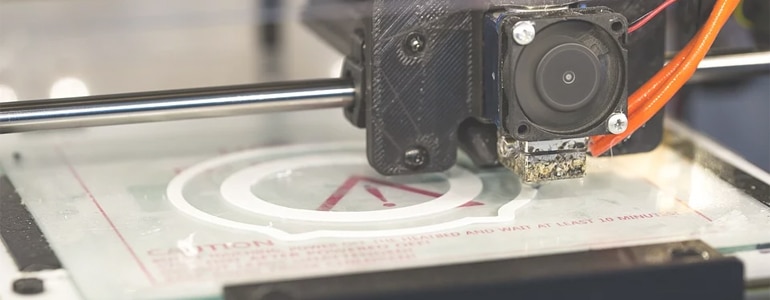
Will 3D Printing Replace CNC Machining?
For example, Swedish Automotive Manufacturer, Koenigsegg 3D printed the turbocharger for the world’s first series produced megacar. The One:1 produces one Megawatt of power and is named after its astonishing ratio of hp-to-kg.
Meanwhile, in Aviation and Aerospace, Airbus made history when they began printing aeroplane parts in 2014. Each one of these industries is constantly chasing weight reduction, and Additive Layer Manufacturing (ALM) is the ideal solution in this area.
However, CNC processes still offer some advantages that are worth considering before looking into 3D printing. So, to help you make your decision, here are a few points worth considering:
Accuracy
CNC is well known for its dimensional accuracy.
While metal 3D printing, in particular, can be associated with thermal distortion, cracking and other defects. Thankfully, there are now software technologies to help 3D printing engineers simulate, predict and reverse potential defects in advance. These software improvements have the capability to entirely negate past inaccuracies.
Complexity
Pre-programmed CNC machining can turnaround complex projects speedily.
But, one of the main advantages of 3D printing is its ability to handle almost any complex geometry. This reduces the number of parts that are usually needed in an assembly when using CNC. So, for complex parts that are difficult to manufacture, 3D printing must be considered first.
An added bonus is that there are now software technologies that take advantage of this feature to help designers choose the minimum weight and optimum stiffness through topology analysis before printing.
3D printing technologies differ in terms of the tolerances they can handle. And CNC is generally considered superior. Although, when considering the minimum layer thickness achieved by some 3D printing technologies, this advantage becomes less noticeable.
Environmental Impact
Just how sustainable is 3D printing in comparison to CNC machining?
3D printing generates less waste as material is usually fed and any leftover material can be recycled. This makes it cleaner than CNC which usually involves cutting from a material and creating . However, 3D printing is limited to the build size. So, when it comes to the maximum size of parts 3D printing cannot compete well with CNC.
There is almost no limit to the type of material that can be used in 3D printing such as plastic and metal. There are 3D printing examples of food, chocolate, vitamins and even human tissues. Although CNC can be used for a wide range of materials there are still materials that CNC cannot do, such as certain superalloys.
User-Friendliness
Generally, 3D printing is easier to use as it is automated.
Once the engineer orientates the part, defines slicing & scan path and generates support, if needed. This can all be automated using software technology, so that the printer works unsupervised until it is finished.
CNC usually requires a skilled operator to set-up the speed, cutting path, take manual measurements as well as re-positioning. And the operator must supervise throughout the entire process.
It’s worth noting that both manufacturing processes may require post-processing and therefore this cannot be used for comparison.
Cost
The right process for the right production volume.
This is largely dependent on the volume of printing and related to the speed of delivery. Therefore, for low quantities (preferably in 100’s), 3D printing offer lower cost and it is faster. Other factors require further consideration such as CNC parts repair and replacements. But for large quantities, of 500 and more, other manufacturing should also be considered, such as casting.
Final Thoughts
The choice between 3D printing and CNC is highly dependent on the materials in use, the number of parts, speed of delivery required and geometrical complexity. The case for 3D Printing becoming the primary manufacturing process is largely dependent on the development of improved accuracy, increased build size and accelerated print time.
Get in touch to discover how we help our customers compete with design, simulation, manufacturing and data management software solutions.

